Australia's South China Sea Challenges
Canberra needs to work with Southeast Asia to address looming South China Sea challenges from China and the US
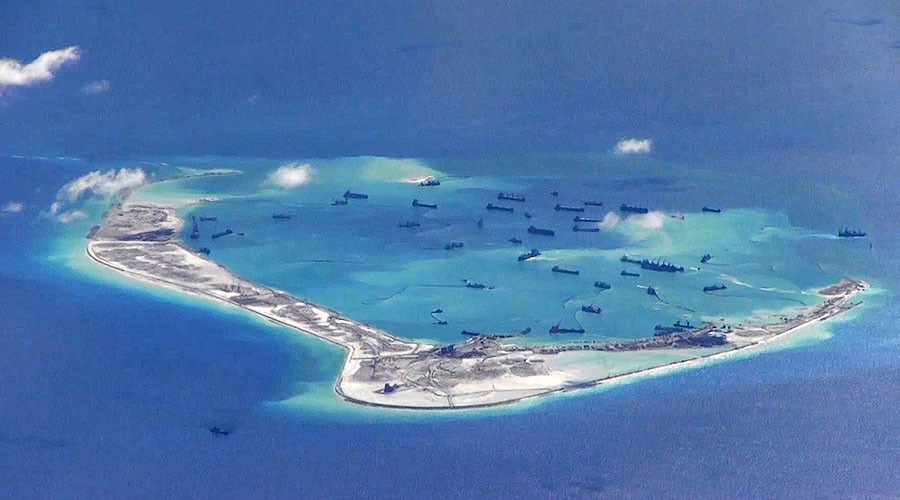
- China will not agree to a South China Sea Code of Conduct (COC) that is consistent with the 2016 South China Sea arbitral tribunal ruling, and therefore any COC which China agrees with the Association of Southeast Asian Nations (ASEAN) will harm Australia’s interests. But a lack of Australian support for such a Code would aggravate relations with Southeast Asian states and ASEAN, and with China.
- Australia should use the time afforded by the drawn-out Code of Conduct negotiations to coordinate with the five littoral Southeast Asian states affected by China’s unlawful maritime claims. Australia should emphasise the need for consistency with international law, especially the 2016 arbitral ruling.
- The Biden administration is likely to increase pressure on Australia to conduct freedom of navigation operations (FONOPS) in the South China Sea. Such action may risk a significant Chinese response against Australia.
Executive Summary
What is the problem?
Australia’s current South China Sea policies are under strain from two sides. On the China side, Beijing will not agree to any Code of Conduct that is consistent with the arbitral tribunal ruling it rejects. If the ASEAN member states agree to such a Code of Conduct, Australia cannot support it. On the US side, there is an increasing likelihood that the Biden administration will place more pressure on Australia to conduct freedom of navigation operations (FONOPs) in support of the 2016 United Nations Convention on the Law of the Sea (UNCLOS) ruling, forcing Australia to choose between damaging our relations with China or rejecting a request from the United States.
What should be done?
Australia should coordinate with willing Southeast Asian littoral states to influence future Code of Conduct negotiations and encourage states not to sign up to it if the likely Code is not consistent with the 2016 arbitral tribunal ruling.
Australia should not conduct FONOPs in the South China Sea that pass within 12 nautical miles of features claimed by China. Rather, Australia should participate in bilateral and minilateral naval exercises with willing Southeast Asian littoral states in their respective exclusive economic zones in the South China Sea; it should do this more often and more publicly.
Australia should advocate for regular Quadrilateral Security Dialogue (Quad) Leaders’ Summits and inclusion of China’s unlawful maritime claims and activities in the South China Sea on the agenda.
These policy adjustments should advance Australia’s interests in strengthening Southeast Asian littoral states’ hands in Code of Conduct negotiations with China, moderate pressure to conduct FONOPs in the South China Sea, and reduce the likelihood and scale of Chinese punitive measures against Australia.
Introduction
A key test of China’s willingness to accept the current rules-based order is the way it handles its disputes with five Southeast Asian littoral states (Brunei, Indonesia, Malaysia, the Philippines, and Vietnam) in the South China Sea. China is failing this test as it seeks effective control of the Sea — a vital conduit of international trade.
Over the past decade, China has more aggressively pushed its unlawful ‘nine-dash line’[1] maritime claims in the South China Sea — an approach that violates the maritime and sovereign rights of these five Southeast Asian littoral states. This poses a direct challenge to Australia’s support for the rules-based order and its “deep stake in the security of Southeast Asia”.[2]
China’s aggressive approach has become a greater concern in Australia’s relations with China, the United States, Southeast Asian littoral states, and ASEAN, since China’s artificial island-building campaign in the Spratlys from 2013.[3] This has made the South China Sea an increasingly important arena for the mounting US–China rivalry. The United States exercises its freedom of navigation and overflight rights in the South China Sea to contest China’s claims and offer support to Southeast Asian littoral states.
Southeast Asian littoral states have reacted unevenly to China’s escalating aggression in advancing its unlawful claims in the South China Sea, but have mostly sought to defend their sovereign and maritime rights, individually and through ASEAN. At the same time, US FONOPs challenging these Chinese claims have become more frequent and public.
Australia has supported the efforts of its Southeast Asian neighbours, and may be required to do more of this in the coming years. To date, the Australian government has resisted calls to conduct FONOPs that could provoke a punitive Chinese response; Chinese state media has warned that Royal Australian Navy presence operations in the South China Sea are at risk of Chinese attack.[4]
China’s more aggressive approach has become clearer over the past decade. This began with Chinese patrol boats harassing a seismic survey vessel around Reed Bank on the Philippine continental shelf in the South China Sea in 2011.[5] The following year, China forcefully asserted control of Scarborough Shoal in the Philippine exclusive economic zone in the South China Sea.[6]
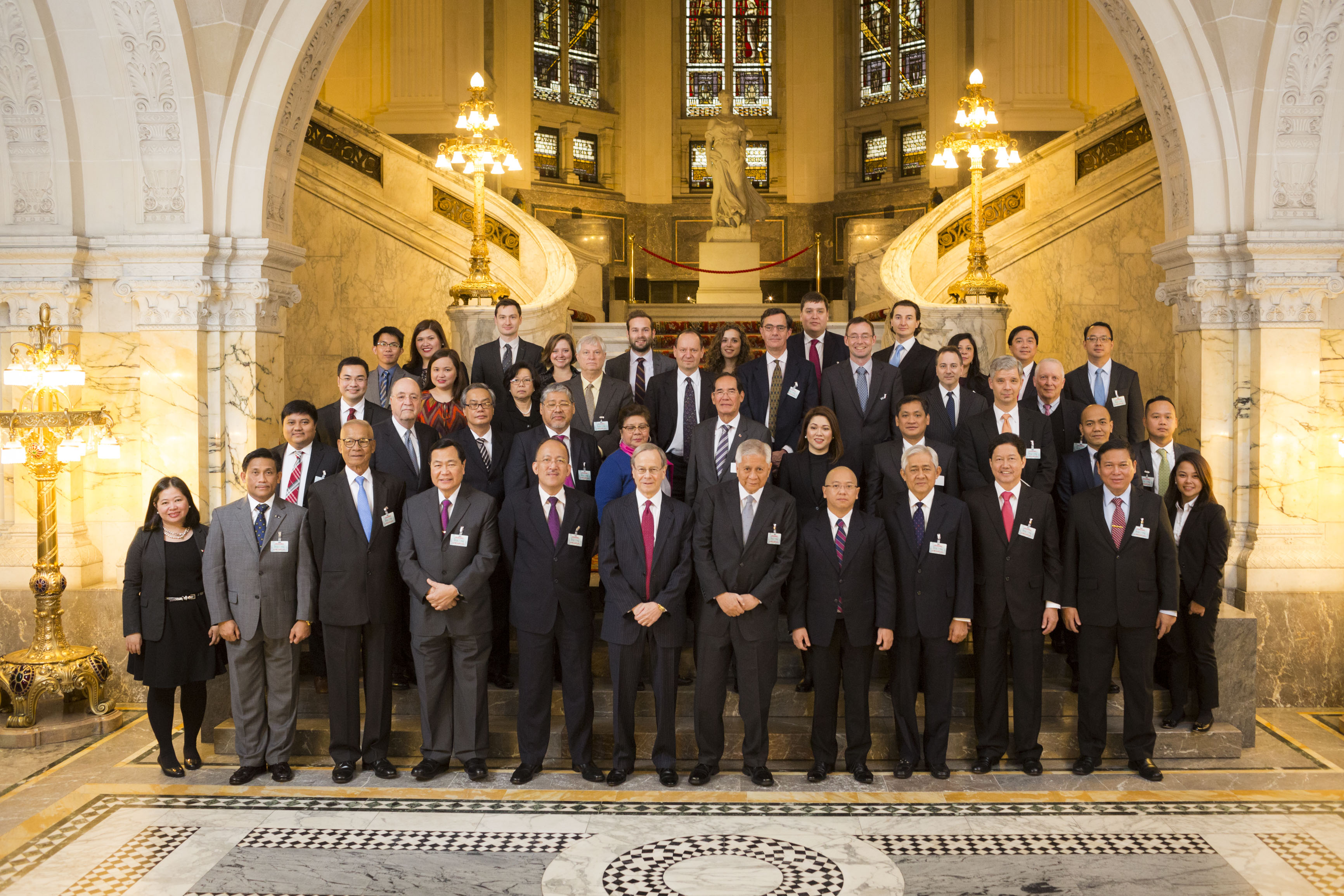
These events led the Philippines to file an arbitration case under UNCLOS against China in January 2013, arguing that China was violating Philippine sovereign and maritime rights in the Philippine exclusive economic zone in the South China Sea. China attempted to avoid the arbitral tribunal by arguing that a system for resolving disputes in the South China Sea already existed through various instruments, including the 2002 China–ASEAN Declaration on the Conduct of Parties in the South China Sea (DOC).[7]
The July 2016 arbitral tribunal ruling upheld the Philippine case against China.[8] The tribunal:
- rejected China’s jurisdictional argument, ruling the DOC a political, non-binding agreement which did not exclude other means of dispute resolution;
- acknowledged that the third party interventions of Vietnam, Malaysia, and Indonesia in the proceedings supported the validity of the Philippine case;
- concluded that China had violated the Philippines’ sovereign rights in the Philippine exclusive economic zone in the South China Sea;
- found that there is no legal basis for China to claim historic rights to resources within the ‘nine-dash line’; and
- found that “none of the Spratly Islands is capable of generating extended maritime zones”, and “the Spratly Islands cannot generate maritime zones collectively as a unit”.
The Philippines accepted the UNCLOS ruling as final and binding on the Philippines and China. China rejected it outright.
Australia's position on the UNCLOS ruling
On the day of the UNCLOS ruling, Australia called on “the Philippines and China to abide by the ruling, which is final and binding on both parties”.[9] Australia has repeatedly reaffirmed this position, as have the Philippines, the United States, and Japan.
The opposing positions of Australia and China on the UNCLOS ruling have been a significant factor in deteriorating Australia–China relations. But Canberra has not stepped back. Australia’s 23 July 2020 Note Verbale to the Secretary-General of the United Nations rejected China’s arguments against the UNCLOS ruling and affirmed its final and binding nature.[10]
In the now notorious list of 14 Australian behaviours that Beijing claimed in November 2020 are “poisoning bilateral relations”, seventh was that Australia was “the first non-littoral country to make a statement on the South China Sea to the United Nations”.[11]
Most Southeast Asian states’ responses to the UNCLOS ruling have been less direct and categorical than Australia’s.[12] ASEAN, a consensus-constrained body, has not referred to the UNCLOS ruling. That may be because of Prime Minister Hun Sen of Cambodia — leader of the Southeast Asian state perceived as the most closely aligned with China. In 2016, he reportedly labelled the ruling “the worst political collusion in the framework of international politics”, and opposed “any declaration by ASEAN to support the verdict in relation to the South China Sea disputes”.[13]
These varying responses have created the impression that Australia, the United States, and Japan support the UNCLOS ruling more than the Southeast Asian littoral states that directly benefit from it. But this perception may be changing. Indonesia’s 26 May 2020 Note Verbale to the Secretary-General of the United Nations cited the UNCLOS ruling as confirming Indonesia’s position on “the maritime entitlements of the maritime features”, and that China’s “Nine-Dash Line map implying historic rights claim clearly lacks international legal basis and is tantamount to upset[ting] UNCLOS 1982”.[14]
On 22 September 2020, Philippine President Rodrigo Duterte, during his first address to the United Nations General Assembly, called on China to accept the UNCLOS ruling in the strongest terms he has used.[15] Previously, Duterte had said in December 2016 that he would “set aside” this ruling to improve relations with China.[16]
Regional elite and Philippine public opinion polling also show strong support for the UNCLOS ruling and a COC consistent with it:
- In the ISEAS State of Southeast Asia: 2021 Survey[17] of regional elites, 85 per cent of respondents from the ten ASEAN member states agreed that “ASEAN should take a principled stand that upholds international law, including UNCLOS, and respect the 2016 arbitral tribunal ruling.” In the same report, 100 per cent of Philippine, 91 per cent of Vietnamese, 91 per cent of Indonesian, and 90 per cent of Bruneian respondents agreed. Almost 81 per cent of all respondents agreed that “the COC must be aligned with international law including UNCLOS”;
- In a July 2020 Social Weather Stations poll, 70 per cent of adult Filipinos wanted their government to assert their rights in the West Philippine Sea (the local name for the Philippine exclusive economic zone in the South China Sea), against 13 per cent who disagreed. Four out of five agreed that “The Philippines should form alliances with other democratic countries that are ready to help in defending our territorial rights in the West Philippine Sea.”[18]
More frequent polling on the UNCLOS ruling and the COC in and across the Philippines, Vietnam, Indonesia, Malaysia, and Brunei is likely to show very similar levels of support for the UNCLOS ruling and a COC based on it. New, corroborated polling data would strengthen the position of littoral states in COC negotiations and pressure their governments not to concede.
Australia's coming challenges
The UNCLOS ruling and China’s rejection of it frame two looming challenges to Australia’s South China Sea policies: a possible Code of Conduct in the South China Sea between ASEAN and China (the COC); and the likelihood of increased US pressure on Australia to conduct FONOPs within 12 nautical miles of Chinese-claimed features in the areas covered by the UNCLOS ruling.
COC challenge
The origin of the COC under negotiation is in China. In 1995, China took control of Mischief Reef, a low-tide feature in the Philippine exclusive economic zone in the South China Sea. This provocative act spurred Southeast Asian littoral states, through ASEAN, to call for a COC with China to lower tensions and the risk of conflict. In 2002, ASEAN and China agreed to the interim DOC that stated:
“The Parties concerned reaffirm that the adoption of a code of conduct in the South China Sea would further promote peace and stability in the region and agree to work, on the basis of consensus, towards the eventual attainment of this objective.”[19]
Negotiations stalled for over a decade until the Philippines filed its arbitration case in January 2013. On 2 April 2013 China announced its willingness to restart “consultations” on the COC. Since the UNCLOS ruling against China, Beijing has pushed for the negotiations to move faster. On 13 November 2018, Chinese Premier Li Keqiang called on the parties “to strive to conclude consultations on a code of conduct in three years’ time on the basis of consensus”.[20]
Negotiations stalled for over a decade until the Philippines filed its arbitration case in January 2013.
China’s three-year timeline will not be met. No face-to-face negotiations have taken place since early 2020 due to the COVID-19 pandemic. However, China’s interest in the COC helps deflect attention away from Beijing’s rejection of this ruling and advances China’s position that the South China Sea disputes do not and should not interest or involve ‘non-regional’ powers like Australia.[21]
The course of COC negotiations since 2013 has reinforced assumptions that China will not agree to any COC that is consistent with the UNCLOS ruling or that will only include issues not covered by the ruling. Instead, they suggest that China will use the COC to counter future UNCLOS cases against it in the South China Sea, and undermine the South China Sea interests of ‘non-regional’ powers.
China’s proposed COC text became public in the August 2018 COC “Single Draft Negotiating Text” as agreed between China and the ASEAN member states. Its provisions would prevent all parties from cooperating in marine economic activity with companies from “outside the region”, and would require parties to notify each other of any military exercises with countries from “outside the region” that other signatories could reject.[22]
China’s recent South China Sea activities are consistent with those provisions — they include ongoing harassment of energy projects involving “companies from outside the region” in the Philippine, Vietnamese, and Malaysian exclusive economic zones in the South China Sea. One example of many is the November 2020 incident in which a China Coast Guard ship “harassed a drilling rig and its supply ships operating just 44 nautical miles from Malaysia’s Sarawak State”.[23]
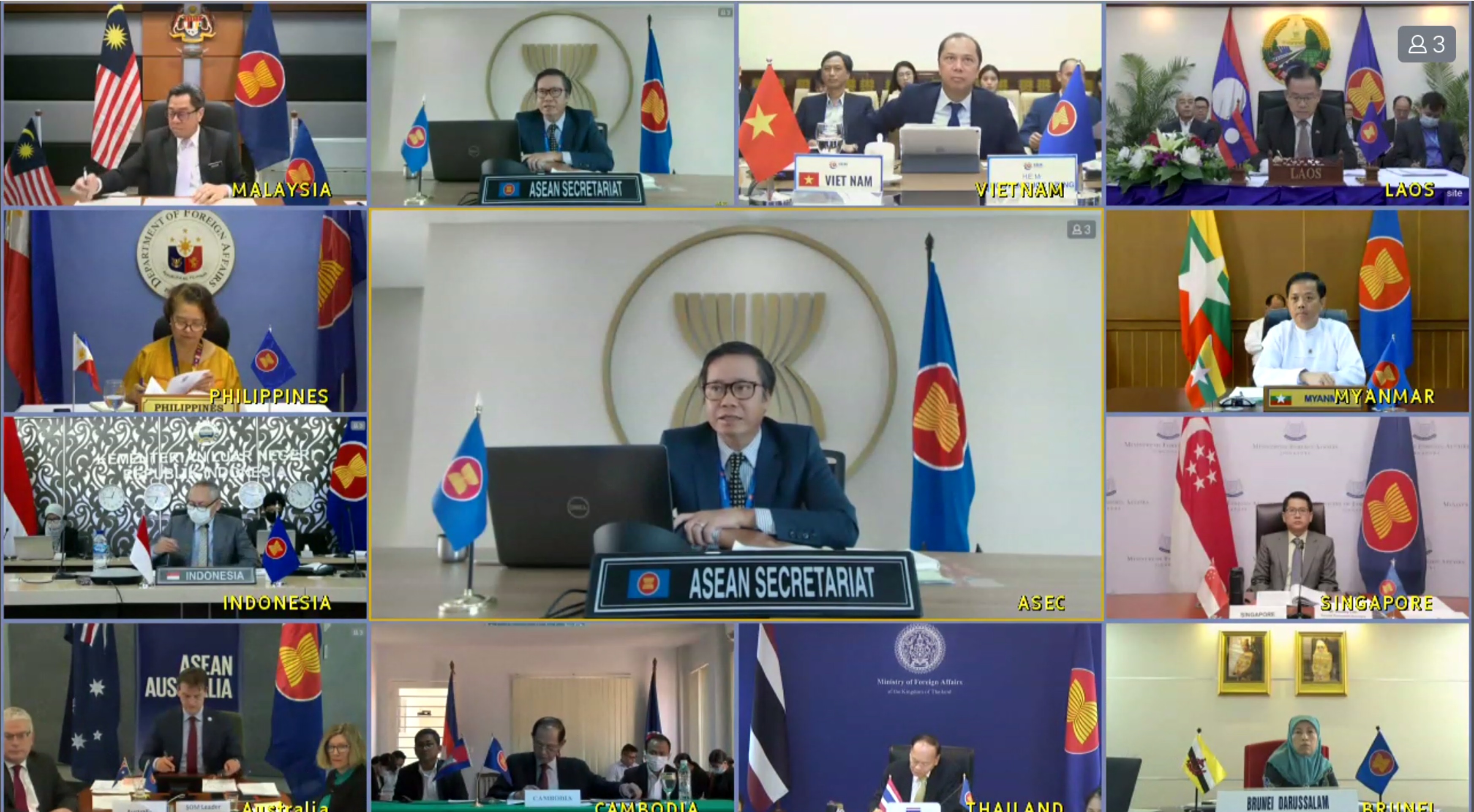
Reflecting these developments, Australia’s support for the COC has become more conditional. The Co-Chairs’ Summary of the 32nd ASEAN–Australia Forum on 18 May 2020 states that:
“Australia expressed its expectation that the COC would be consistent with international law including UNCLOS, not prejudice the interests of third parties, and reinforce and not undermine existing, inclusive regional architecture.”[24]
China’s proposed text for the COC is inconsistent with these Australian expectations. Australia’s interests may therefore be better served by having no COC at all, rather than a COC that China would be prepared to sign.
FONOPs challenge
After the Philippines filed its arbitration case against China under UNCLOS in January 2013, the United States began to make public its FONOPs that challenge China’s excessive maritime claims in the South China Sea. These have included US warships sailing within 12 nautical miles of low-tide features that China has developed into fortified artificial islands. Under UNCLOS, such features have no territorial seas of their own.[25] As expected, China has castigated these US operations and cited them as a pretext for further militarising its artificial islands. After the UNCLOS ruling, under the Trump administration, these operations became more frequent.
The United States is the only country that has acknowledged conducting these types of operations. Australia resisted the Obama and Trump administrations’ encouragement for other like-minded states to conduct similar operations. Former Prime Minister Malcolm Turnbull notes in his autobiography that he “considered undertaking such freedom of navigation operations (FONOPs), but was unsure whether the Americans, under Barack Obama, would actually back us if we did.”[26]
Voices on both sides of the Australian parliament have called for such operations by Australia. The day after the UNCLOS ruling’s release, Australia’s shadow defence minister, Labor Senator Stephen Conroy, called on the Royal Australian Navy to sail within 12 nautical miles of Chinese-controlled low-tide elevations.[27] However, soon after, the Opposition appeared to soften this position.[28]
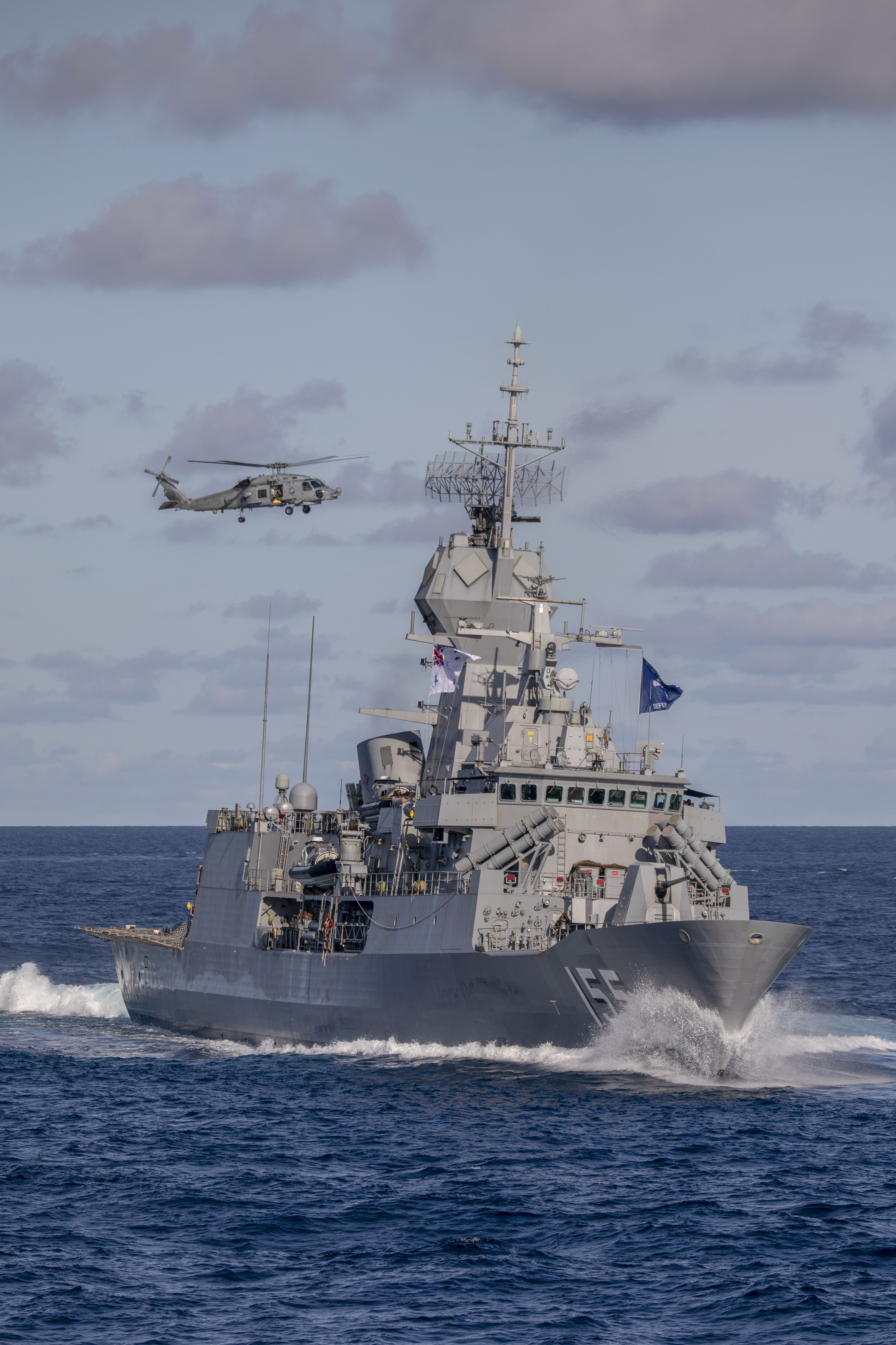
The vessel is part of a regional presence deployment where operations are being conducted with partners
across Northeast and Southeast Asia and the Northeast Indian Ocean. Image: LSIS Thomas Sawtell / Defence.gov.au.
Advocates for Australian FONOPs extend beyond the parliamentary chamber. On 7 March 2018, former Defence Secretary Dennis Richardson publicly remarked:
“I believe we should be conducting freedom of navigation exercises through territorial seas claimed by China, generated by man-made features. They [China] have the right to be in the South China Sea, but they don’t have a right to create man-made features and seek to assert territorial waters from those.”[29]
Foreign Minister Bishop responded:
“We will continue to exercise our rights to freedom of navigation, pursuant to international law, as we have always done and we will continue to do so. What we won’t do is unilaterally provoke an increase in tensions in the South China Sea.”[30]
The Trump administration, while seemingly unilateralist and dismissive of US alliances, encouraged Australia to conduct FONOPs in the South China Sea. The Biden administration may be more insistent. Because it is more multilateralist and pro-alliances, it will want its allies to do more.
Two senior Biden administration appointees have particular expertise and interest in the South China Sea disputes and may advocate for a more robust US and allied position on these disputes.
In the first months of the new Biden administration, three of these operations have been made public, suggesting that there will be no let-up in US FONOPs that accord with the UNCLOS ruling. In their 16 April 2021 Joint Leaders’ Statement, US President Biden and Prime Minister Suga of Japan reaffirmed their “objections to China’s unlawful maritime claims and activities in the South China Sea” and their “strong shared interest in a free and open South China Sea governed by international law, in which freedom of navigation and overflight are guaranteed”.[31]
Two senior Biden administration appointees have particular expertise and interest in the South China Sea disputes and may advocate for a more robust US and allied position on these disputes.
Ely Ratner, who worked with Biden when he was a senator and vice president, is Biden’s nominee for Assistant Secretary of Defense for Indo-Pacific affairs and leads the Department’s new China task force. In a 2017 Foreign Affairs article, Ratner argued for a more forward-leaning US policy on the South China Sea and closer cooperation with Australia if China were to deploy advanced military capabilities to its artificial islands in the Spratlys.[32] China has done so.
Kurt Campbell is the first Indo-Pacific Coordinator at the National Security Council. Campbell is a strong supporter of the US–Australia alliance and of allied cooperation in Asia. In 2019, Campbell and Jake Sullivan, now Biden’s National Security Advisor, outlined a future China strategy for the United States “that must start with allies” and seek “a steady state of clear-eyed coexistence [with China] on terms favourable to US interests and values”.[33] Campbell, as Assistant Secretary of State for East Asian and Pacific Affairs, was intimately involved in the failed negotiations to stop China taking control of Scarborough Shoal in 2012.
US pressure on Australia to conduct FONOPs within 12 nautical miles of China-claimed land features in the South China Sea, and the debate in Australia about these, is likely to mount in the coming years.
What Australia should do: policy recommendations
1. Coordinate statements with Southeast Asian littoral states on Chinese activities inconsistent with the UNCLOS ruling
Australia should coordinate with Southeast Asian littoral states that are willing to criticise Chinese activities inconsistent with the UNCLOS ruling, and issue supporting statements. Coordination on statements can be done from Canberra or through Australian missions. Such statements would reinforce Australia’s position on the UNCLOS ruling and Australia’s relations with the infringed-upon Southeast Asian littoral states.
In March 2021, Australia joined the United States, Japan, the European Union, and Canada in a Philippines-led criticism of the massing of Chinese vessels around Whitsun Reef in the Philippine exclusive economic zone of the South China Sea. China rebuffed these statements of support, describing them as being coordinated and “irresponsible”.[34] The more countries issue such statements, individually or in groups, the more effective each will be in reducing the likelihood and scale of Chinese punitive measures against any of them.
2. Do not conduct FONOPs within 12 nautical miles of Chinese-claimed features in the South China Sea
Australia should continue to resist any US pressure to conduct FONOPs and, instead, strengthen other forms of cooperation with the United States on the South China Sea disputes.
An Australian FONOP would require a change to Australia’s maritime operations doctrine. FONOPs are not one of the thirteen maritime operations identified by the Royal Australian Navy.[35] The closest Australian operations to the FONOPs conducted by the US Navy are presence operations. Operation Gateway is Australia’s main program of presence operations in maritime Southeast Asia. Under Australia’s maritime doctrine, presence operations are included in the non-coercive category of diplomatic operations. An Australian FONOP would be hard to classify as such.
Any Australian FONOP in the South China Sea would likely face greater operational risks and lead to greater punitive reactions from China than US operations have. In 2019, Chinese fishing vessels reportedly directed laser beams at Royal Australian Navy helicopters during Indo-Pacific Endeavour presence operations far from any China-claimed land features in the South China Sea.[36] An Australian FONOP should expect to face greater operational risks, and China could impose punitive diplomatic and economic measures on Australia of a greater scale than those facing the country currently.
3. Conduct and promote more bilateral and minilateral military exercises with Southeast Asian littoral states in the South China Sea
Australia should instead participate in more and larger bilateral and minilateral military exercises with Southeast Asian littoral states in their respective exclusive economic zones in the South China Sea. These exercises would deepen defence relations with Southeast Asian littoral states and signal Australia and littoral states’ opposition to China’s COC proposal for a notification and rejection mechanism for such exercises.
Southeast Asian littoral states are more actively participating in exercises with ‘non-regional’ powers, of which Australia is a key example. These exercises include Australia’s now regular participation in the annual US–Philippine multi-service Balikatan exercises; and the Australia–Vietnam naval exercises during Australian Defence Force’s 2019 Indo-Pacific Endeavour activity.
Recently, the United States, Japan, and Australia conducted trilateral military exercises in the South China Sea and the four Quad countries —Australia, the United States, Japan, and India — participated in a joint exercise in the Philippine Sea. Extending future exercises to include willing Southeast Asian littoral states would send a powerful common message. So would exercises with Southeast Asian littoral states in parallel, but separate from, US–Japan–Australia or Quad exercises in the South China Sea. These would be less sensitive for Southeast Asian littoral states who are wary of ‘annoying’ China and concerned about punitive reactions.
It would be difficult for China to characterise Australian exercises with Southeast Asian states in their respective exclusive economic zones in the South China Sea as an Australian offence against China.
4. Support regular Quad Leaders’ Summits with the South China Sea disputes on the agenda
During the Trump administration, the Quad, made up of Australia, the United States, Japan, and India, was revived and then elevated to foreign minister-level in September 2019. In October 2020, the four ministers met virtually, and again in February 2021. The inaugural Quad Leaders’ Summit was held on 12 March 2021 and an announcement made of “an in-person summit by the end of 2021”.[37] In his opening remarks, President Biden emphasised that this was “the first multilateral summit that I’ve had the opportunity to host as President” and that “the Quad is going to be a vital arena for cooperation in the Indo-Pacific.”[38]
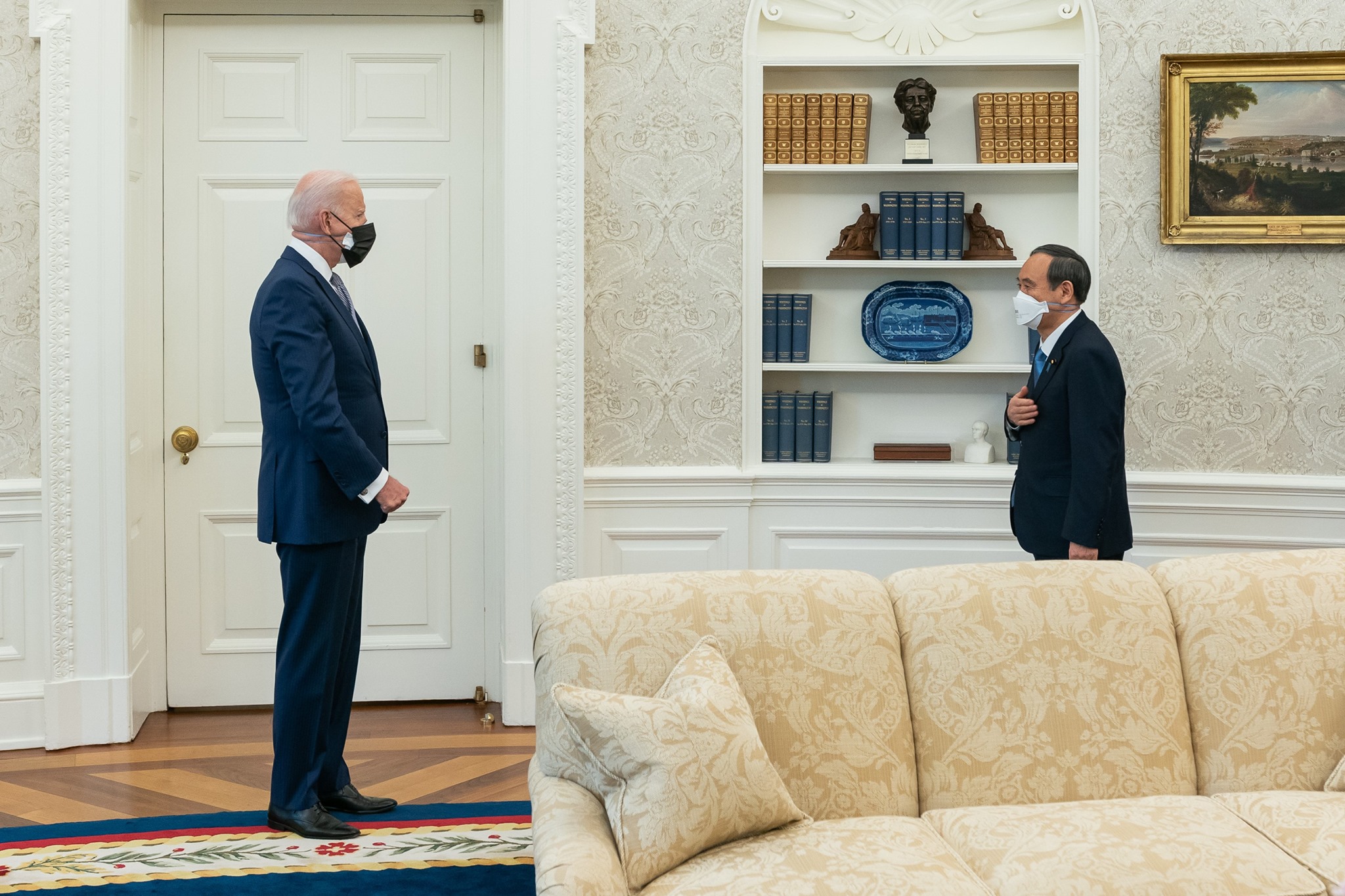
Regional elite polling shows strong Southeast Asian support for the Quad. Responding to the ISEAS State of Southeast Asia: 2020 Survey, 62 per cent of respondents supported their country participating in security initiatives and military exercises organised under the Quad framework, including a majority from each country except Cambodia and Laos.[39] In an earlier, smaller survey, Australian researcher Huong Le Thu found strong agreement with the statement that “the Quad will contribute to stability and peace in the Indo-Pacific” (55 per cent), with just 14 per cent disagreeing.[40]
From its conception, the Quad has played an important signalling role to all states in the Indo-Pacific region. The elevation of the Quad to ministerial level two years ago boosted that signal. Elevating the Quad to regular Leaders’ Summits, as now seems likely, would send an even louder signal of cooperation and common purpose; it would be the only mechanism that brings these four leaders together without China also being present.Including the South China Sea disputes on the Summit agenda would reinforce the members’ shared views on the UNCLOS ruling and the legitimate interests of non-littoral states in the South China Sea. Quad military exercises in international waters in the South China Sea would too. The outcomes of the inaugural Quad Leaders’ Summit included a Quad Vaccine Partnership and a Quad Vaccine Experts Group, a Quad Climate Working Group, and a Quad Critical and Emerging Technology Working Group. The next Summit should announce a Quad Maritime Security Working Group.
Conclusion
Over the past decade, China’s more aggressive approach to its unlawful claims in the South China Sea has directly challenged core Australian interests and the global rules-based order. In the coming years, Australia will face greater and new challenges in the South China Sea.To increase support for the pivotal UNCLOS ruling and counter Chinese aggression without inviting a punitive response that singles out Australia, Canberra should step up coordination with Southeast Asian littoral states and put the South China Sea disputes on the Quad leaders’ agenda.
Notes
This publication is part of the Lowy Institute's ‘Australia’s Security and the Rules-Based Order Project’ and is supported by the Department of Defence’s Strategic Policy Grants Program.
Banner image: Chinese dredging vessels are purportedly seen in the waters around Subi Reef in the disputed Spratly Islands in the South China Sea, May 2015. Image: United States Navy / Wikimedia Commons.
[1] For a short history of China’s ‘nine-dash line’ claims, see Hannah Beech, “Just Where Exactly did China Get the South China Sea Nine-dash Line from?”, Time, 19 July 2016, https://time.com/4412191/nine-dash-line-9-south-china-sea/.
[2] Australian Maritime Doctrine, Sea Power Centre, Royal Australian Navy, 2010, 41, https://www.navy.gov.au/sites/default/files/documents/Amd2010.pdf.
[3] China Island Tracker, Asian Maritime Transparency Initiative, https://amti.csis.org/island-tracker/china/.
[4] Andrew Tillett, “Chinese Media Threatens ‘Evil’ Australia’s Warship in South China Sea”, Australian Financial Review, 1 December 2020, https://www.afr.com/politics/federal/chinese-media-threatens-evil-australia-s-warships-in-south-china-sea-20201201-p56jfb.
[5] For more details, see Ian Storey, “China and the Philippines: Implications of the Reed Bank incident”, China Brief, Vol 11, No 8, The Jamestown Foundation, 6 May 2011, https://jamestown.org/program/china-and-the-philippines-implications-of-the-reed-bank-incident/. Reed Bank is called Recto Bank in the Philippines.
[6] For more details, see Lowell B Bautista, “The Philippine Claim to Bajo de Masinloc [Scarborough Shoal] in the Context of the South China Sea Dispute”, Journal of East Asia and International Law, Vol 6, No 2, 2013, https://ro.uow.edu.au/cgi/viewcontent.cgi?article=2053&context=lhapapers. Scarborough Shoal is called Bajo de Masinloc in the Philippines.
[7] Position Paper of the Government of the People’s Republic of China on the Matter of Jurisdiction in the South China Sea Arbitration Initiated by the Republic of the Philippines, 7 December 2014, https://www.fmprc.gov.cn/mfa_eng/zxxx_662805/t1217147.shtml.
[8] The South China Sea Arbitration, Press Release, Permanent Court of Arbitration, The Hague, 12 July 2016, https://pcacases.com/web/sendAttach/1801.
[9] “Australia Supports Peaceful Dispute Resolution in the South China Sea”, Department of Foreign Affairs and Trade Media Release, 12 July 2016, https://www.dfat.gov.au/news/news/Pages/australia-supports-peaceful-dispute-resolution-in-the-south-china-sea.
[10] United Nations Note Verbale No 20/026, https://www.un.org/depts/los/clcs_new/submissions_files/mys_12_12_2019/2020_07_23_AUS_NV_UN_001_OLA-2020-00373.pdf.
[11] Eryk Bagshaw, “Here are the 14 Disputes with Australia”, Twitter, 18 November 2020, https://twitter.com/ErykBagshaw/status/1328983898911457280 .
[12] See Ian Storey, “Assessing Responses to the Arbitral Tribunal’s Ruling on the South China Sea”, ISEAS Perspective 2016/43, ISEAS-Yusof Ishak Institute, 28 July 2016, https://www.iseas.edu.sg/images/pdf/ISEAS_Perspective_2016_43.pdf .
[13] Cited in “Cambodia Retains Stance of Not Backing Arbitration Court’s Award over South China Sea: Spokesman”, Xinhua, 12 July 2016, http://www.china.org.cn/world/Off_the_Wire/2016-07/12/content_38865984.htm.
[14] United Nations Note Verbale No 126/POL-703/v/20 (Unofficial translation), https://www.un.org/Depts/los/clcs_new/submissions_files/mys_12_12_2019/2020_05_26_IDN_NV_UN_001_English.pdf
[15] Presidential Communications Operations Office, “Statement of President Rodrigo Roa Duterte during the General Debate of the 75th Session of the United Nations General Assembly”, 22 September 2020, https://pcoo.gov.ph/presidential-speech/statement-of-president-rodrigo-roa-duterte-during-the-general-debate-of-the-75th-session-of-the-united-nations-general-assembly/.
[16] Cited in Nestor Corrales, “Duterte Says He’ll ‘Set Aside’ Arbitral Ruling on South China Sea”, Philippine Daily Inquirer, 17 December 2016, https://globalnation.inquirer.net/150814/duterte-says-hell-set-aside-arbitral-ruling-on-south-china-sea.
[17] “The State of Southeast Asia: 2021 Survey Report”, ISEAS-Yusof Ishak Institute, 10 February 2021, https://www.iseas.edu.sg/wp-content/uploads/2021/01/The-State-of-SEA-2021-v2.pdf.
[18] “SWS: 4 out of 5 Filipinos Say PH Should Form Alliances with Countries Ready to Defend Territorial Rights in West PH Sea”, CNN Philippines, 14 July 2020, https://www.cnn.ph/news/2020/7/14/sws-survey-west-philippine-sea-alliance.html.
[19] Declaration on the Conduct of Parties in the South China Sea, Association of Southeast Asia Nations (ASEAN), 4 November 2002, https://asean.org/?static_post=declaration-on-the-conduct-of-parties-in-the-south-china-sea-2.
[20] “Premier Li Keqiang’s Speech at the 44th Singapore Lecture”, China Daily, 15 November 2018, http://www.chinadaily.com.cn/a/201811/15/WS5bece520a310eff303288e55.html.
[21] Ian Storey, “Assessing the ASEAN-China Framework for the Code of Conduct for the South China Sea”, ISEAS Perspective, 2017/62, ISEAS-Yusof Ishak Institute, 8 August 2017, https://www.iseas.edu.sg/images/pdf/ISEAS_Perspective_2017_62.pdf.
[22] Carl Thayer, “A Closer Look at the ASEAN-China Single Draft South China Sea Code of Conduct”, The Diplomat, 3 August 2018, https://thediplomat.com/2018/08/a-closer-look-at-the-asean-china-single-draft-south-china-sea-code-of-conduct/.
[23] “China and Malaysia in Another Staredown over Offshore Drilling”, Asia Maritime Transparency Initiative, 25 November 2020, https://amti.csis.org/china-and-malaysia-in-another-staredown-over-offshore-drilling/.
[24] “32nd ASEAN-Australia Forum — Co-Chairs’ Summary”, https://asean.org/storage/2020/05/Co-Chairs-Summary-32nd-ASEAN-Australia-Forum-FINAL.pdf.
[25] “Part II: Territorial Sea and Contiguous Zone”, United Nations Convention Agreements, https://www.un.org/Depts/los/convention_agreements/texts/unclos/part2.htm.
[26] Greg Sheridan, “Cool Heads Key amid Gung-ho South China Sea Rhetoric”, The Australian, 27 July 2020, https://www.theaustralian.com.au/world/cool-heads-key-amid-gungho-south-china-sea-rhetoric/news-story/699b0b0a79078073d8272ff883a821ae.
[27] Iain Henry, “Australia Struggles for Clarity on the South China Sea”, Lowy Interpreter, 14 May 2019, https://www.lowyinstitute.org/the-interpreter/australia-struggles-clarity-south-china-sea.
[28] “Labor Shifts on South China Sea Operations”, 9News, 19 October 2016, https://www.9news.com.au/national/fed-labor-shifts-on-sth-china-sea-policy/47000708-f4ef-43e3-986f-dd8079f0f202.
[29] Angus Grigg and Lisa Murray, “Former Spy Chief Dennis Richardson Says China Overstepped in Australia”, Australian Financial Review, 7 March 2018, https://www.afr.com/business-summit/former-spy-chief-dennis-richardson-says-china-overstepped-in-australia-20180307-h0x5va.
[30] Richardson and Bishop are cited in Elena Collinson “Australia-China Relations Summary”, Australia-China Relations Institute, March 2018, https://www.australiachinarelations.org/sites/default/files/Australia-China%20relations%20monthly%20summary%20-%20March%202018_0.pdf.
[31] “US–Japan Joint Leaders’ Statement”, 16 April 2021, https://www.whitehouse.gov/briefing-room/statements-releases/2021/04/16/u-s-japan-joint-leaders-statement-u-s-japan-global-partnership-for-a-new-era/.
[32] Ely Ratner, “Course Correction: How to Stop China’s Maritime Advance”, Foreign Affairs, July/August 2017, https://www.foreignaffairs.com/articles/2017-06-13/course-correction.
[33] Kurt M Campbell and Jake Sullivan, “Competition without Catastrophe: How America Can Both Challenge and Co-exist with China”, Foreign Affairs, September/October 2019, https://www.foreignaffairs.com/articles/china/competition-with-china-without-catastrophe.
[34] Christia Marie Ramos, “China Feuds with EU, UK, Canada Envoys over Comments on WPS”, Philippine Daily Inquirer, 25 March 2021, https://globalnation.inquirer.net/194585/china-hits-back-as-more-nations-call-it-out-for-raising-tensions-in-wps.
[35] Australian Maritime Operations, Sea Power Centre, Royal Australian Navy, 2017, https://www.navy.gov.au/sites/default/files/documents/Australian_Maritime_Operations_2017.pdf.
[36] Lisa Martin, “Australian Navy Pilots Hit with Lasers during South China Sea Military Exercise”, The Guardian, 29 May 2019, https://www.theguardian.com/australia-news/2019/may/29/australian-navy-pilots-hit-with-lasers-during-south-china-sea-military-exercise.
[37] “Quad Leaders’ Joint Statement: ‘The Spirit of the Quad’”, White House, 12 March 2021, https://www.whitehouse.gov/briefing-room/statements-releases/2021/03/12/quad-leaders-joint-statement-the-spirit-of-the-quad/.
[38] “Remarks by President Biden, Prime Minister Modi of India, Prime Minister Morrison of Australia, and Prime Minister Suga of Japan in the Virtual Quad Leaders’ Summit”, 12 March 2021, https://www.whitehouse.gov/briefing-room/speeches-remarks/2021/03/12/remarks-by-president-biden-prime-minister-modi-of-india-prime-minister-morrison-of-australia-and-prime-minister-suga-of-japan-in-virtual-meeting-of-the-quad/.
[39] “The State of Southeast Asia: 2020 Survey Report”, ISEAS-Yusof Ishak Institute, 16 January 2020, https://www.iseas.edu.sg/wp-content/uploads/pdfs/TheStateofSEASurveyReport_2020.pdf.
[40] Huong Le Thu, “Southeast Asian Perceptions of the Quadrilateral Security Dialogue”, ASPI Special Report, October 2018, https://s3-ap-southeast-2.amazonaws.com/ad-aspi/2018-10/SR%20130%20Quadrilateral%20security%20dialogue.pdf?Fm448sn_MfBnQebAdDv1bBqlKOu8iWud.



